The Supermicro X8SIL-F motherboard is an excellent board for home and small business servers. When building a file server built upon Windows Home Server (V1 or V2 Vail) or another open source NAS project such as FreeNAS, Openfiler, EON ZFS storage, the Supermicro has a feature set that differentiates itself from both AMD and Intel based consumer-level motherboards. Compatibility with those operating systems and virtualization platforms such as Microsoft’s Hyper-V make the X8SIL-F a strong contender for a DIY storage or virtual machine server.
Test Configuration (Base):
- CPU(s): Intel Core i3-530 and Intel Xeon X3440
- Motherboard: Supermicro X8SIL-F Rev. 1.02
- Memory: 2x 4GB kits of Kingston ECC 1333MHz DDR3 KVR1333D3E9SK2/4G (Unbuffered)
- Case: Norco RPC-4220
- Drives: Hitachi 7200rpm 2TB x4
- OS(es): Windows Server 2008 R2 with Hyper-V installed, Windows Home Server (in Hyper-V), Windows Home Server V2 Codename VAIL (in Hyper-V), EON ZFS Storage (0.60.0), OpenFiler (v2.3), FreeNAS (0.7.1), and Ubuntu (9.10)
Some differences between the X8SIL-F and quality enthusiast motherboards/ HTPC motherboards
The LGA1156 platform has been a strong platform for enthusiasts and is quickly catching on with HTPC users for its solid performance and low power consumption. Motherboard manufacturers like Asus, Gigabyte, MSI, and others all have enthusiast level boards with the LGA1156 chipset with multi-stage power (for overclocking), NF200 switched PCIe lanes, USB3, SATA3, onboard HD audio and etc. Some LGA1156 boards also include dual Realtek gigabit NICs although a single NIC is standard. On Supermicro’s offerings, including the X8SIL-F, these enthusiast features are inconspicuously absent.
The X8SIL-F is certainly not an overclocking board. The VRM’s with large heatsinks and heatpipes are absent from the Supermicro offering, as are BIOS options that would allow one to make necessary tweaks.
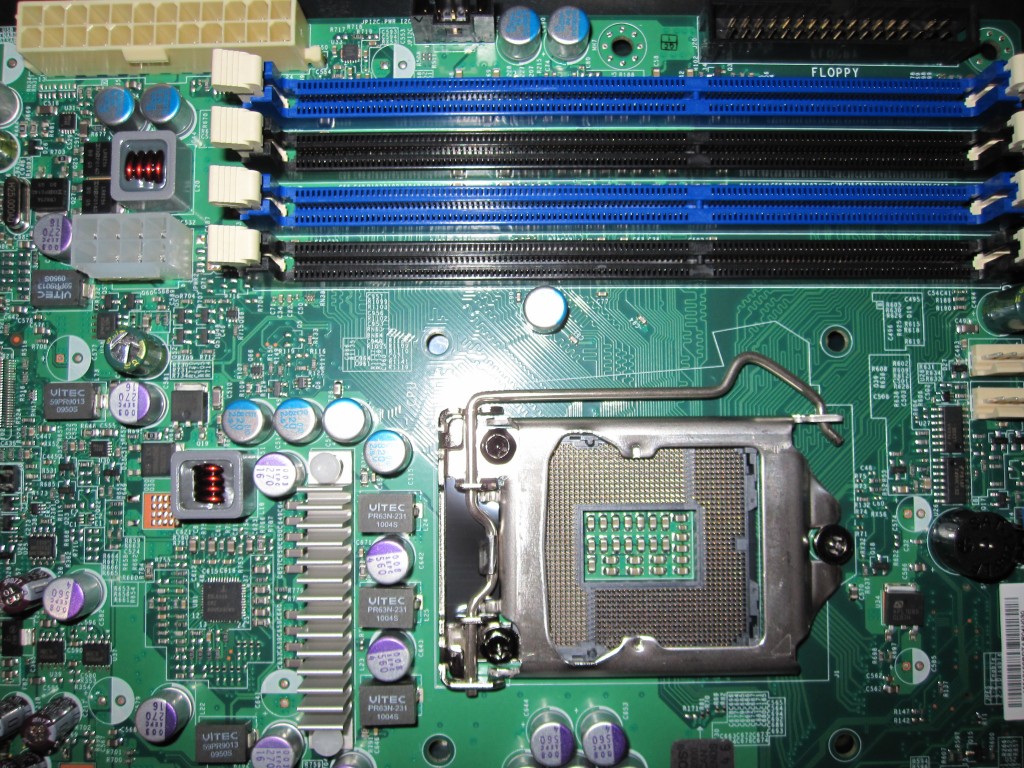
What one will find is that Supermicro’s feature set closely follows the laundry list of important server features. For example, the X8SIL-F has a dedicated Realtek NIC (10/100 interface) that only services the onboard IPMI 2.0. Supermicro included two Intel 82574L based gigabit NICs onboard (which are superior to consumer Realtek gigabit offerings). Other Supermicro Ibex Peak – LGA1156 variants have up to four Intel gigabit NICs or onboard LSI SAS controllers (including 6.0gbps SAS). On the X8SIL-F, the expansion slots (Two PCIe x8, one PCIe x4 with a x8 physical slot, and one legacy PCI slot) are available to add features as necessary.
Processor selections
As one can see by my previous post, the Supermicro X8SIL-F does not support Intel’s Clarkdale based CPUs with version 1.01 of the board. PCB Revision v1.02 of the X8SIL-F does support the new Intel 32nm Core i3 and Core i5 chips. Low power consumption, good performance, and low prices are hallmarks of the Clarkdale line.
If one wants features like native quad cores (and possibly hyperthreading), ECC memory, and etc. Intel has a line of Xeon CPU’s that are Socket 1156 compatible and work with the X8SIL-F. The Xeon X3430 and X3440 are similar to the Core i7 860 but the Xeon parts have slightly lower clock speeds and come with ECC support.
My goal with this system is to create a low cost, low power consumption, and small server, which meant that I decided to use the X8SIL-F with an Intel Core i3-530 at first. The Intel Core i3-530 can be found for approximately $115 which is a very reasonable price point compared to Xeon processors. Paired with the X8SIL-F the street price for the combination is about $300 which is significantly cheaper than using an Intel Xeon X34xx series CPU (or an Intel i5-750).
After testing the X8SIL-F with the Core i3-530 and i5-650, I decided to install a Xeon X3440 so I could take advantage of the memory’s ECC features. Swapping CPU’s was painless and Intel’s stock heatsink/ fan combination was again adequate.
IPMI 2.0 with dedicated management NIC
IPMI 2.0 is simply a must-have home server feature, and is one area that AMD CPU’s are severely outmatched at the present time. On one hand, AMD’s current consumer Athlon and Phenom II chips all have the ability to use ECC memory, which is an important feature for mission critical servers. On the other hand, the ability to get IPMI 2.0 on AMD Socket AM2 and AM3 motherboards is very limited. The best boards I could find for this are Tyan motherboards, of which I could find three compatible motherboards. Conversely, Intel, Supermicro, and Tyan all have IPMI 2.0 enabled motherboards at present. It is a major differentiator as I have had to remotely reboot a system that had ESXi (along with guest OSes) freeze in the past. Using IPMI 2.0, I could just log in and power cycle the box versus having to physically reset the machine.

For those that build systems for others, and therefore have systems installed at remote sites, the IPMI 2.0 features supplied by the Supermicro X8SIL-F’s on board Nuvoton WPCM450 Baseboard Management Controller (BMC) is absolutely invaluable. Service calls for a frozen machine do not mean an immediate trip to the installed-at location. Instead, one can remotely log into a machine and reset it, power cycle the machine, or even power off/ power on the machine. The Java based console redirection allows a user to change BIOS settings, which is not possible with RDC and VNC connections.
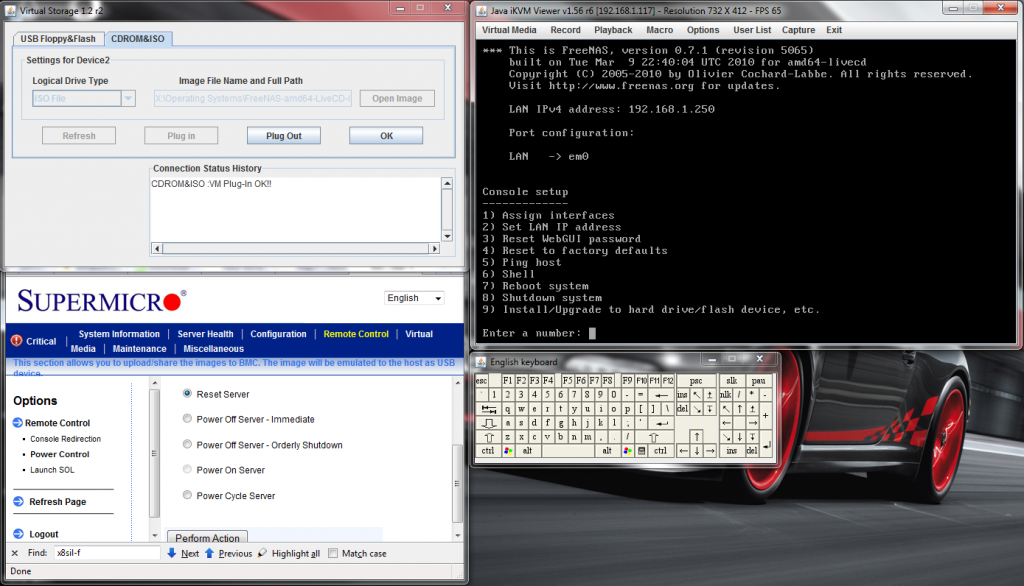
Furthermore, with IPMI 2.0 and the ability to mount ISO’s over a network, one can deploy the server with a USB flash drive and setup the operating system remotely (as seen above with FreeNAS). Thus far I have used this installation method to install EON ZFS Storage (0.60.0), OpenFiler (v2.3), FreeNAS (0.7.1), and Ubuntu (9.10). Next up I will be doing a VMWare ESXi and Microsoft Hyper-V installation. Bottom line, for an open source NAS software installation standpoint, IPMI 2.0 and an internal USB header works very well.
Just to give one an idea of how useful this is, I have installed nine operating systems on X8SIL-F equipped systems thus far, and have never plugged in a CD-ROM/DVD ROM, floppy, keyboard, mouse, or monitor at this point.
Dual Integrated Intel LAN
Supermicro’s X8SIL-F has two Intel 82574L based gigabit NICs onboard. Anyone reading my site will note that I am biased heavily in favor of Intel based gigabit NICs. This is for two reasons. First, the OS and Hypervisor support is generally very good for Intel gigabit NICs. Second, I have seen much better throughput on Intel NIC to Intel NIC gigabit networks versus networks with Realtek and Marvell network controllers. The Intel 82574L supports things like TCP/UDP CPU offloading and TSO for lower CPU utilization, PXE/ iSCSI boot, Jumbo frames, two transmit and receive queues per port, a 40KB packet buffer, and etc. The Intel 82574L is the same controller used in Intel’s Gigabit CT (EXPI9301CTBLK) PCIe x1 network adapter. In essence, the Supermicro X8SIL-F saves one $60-70 and a PCIe slot (if one were to get a dual port Intel NIC) or two versus a lower-cost board where NICs would be required separately.
Also of note again, with the X8SIL-F, the Supermicro IMPI 2.0 feature includes the ability to mount CD’s and DVD’s over the onboard 10/100 Realtek controller. Furthermore, the keyboard and video inputs and outputs can also go over the IPMI 2.0 interface offloading this data from the dual Intel gigabit NICs. The net result is that the Intel NICs will have more bandwidth available for sending and receiving content on the X8SIL-F because it has the third NIC (Realtek) for management functions.
Internal USB header
A really nice feature is the internal USB header. This allows one to add a USB thumb drive to the interior of the enclosure housing the Supermicro X8SIL-F. For home and small business storage servers, this is an enormous benefit. FreeNAS, Openfiler, unRaid, untangle and many other operating systems can install directly to a relatively low-cost flash drive saving an onboard SATA port (the X8SIL-F has six onboard SATA II ports), or expansion card SATA/ SAS port for an additional storage drive. Since the USB stick will be installed inside the enclosure, it offers more protection from becoming wrongfully uninstalled than an externally installed drive.
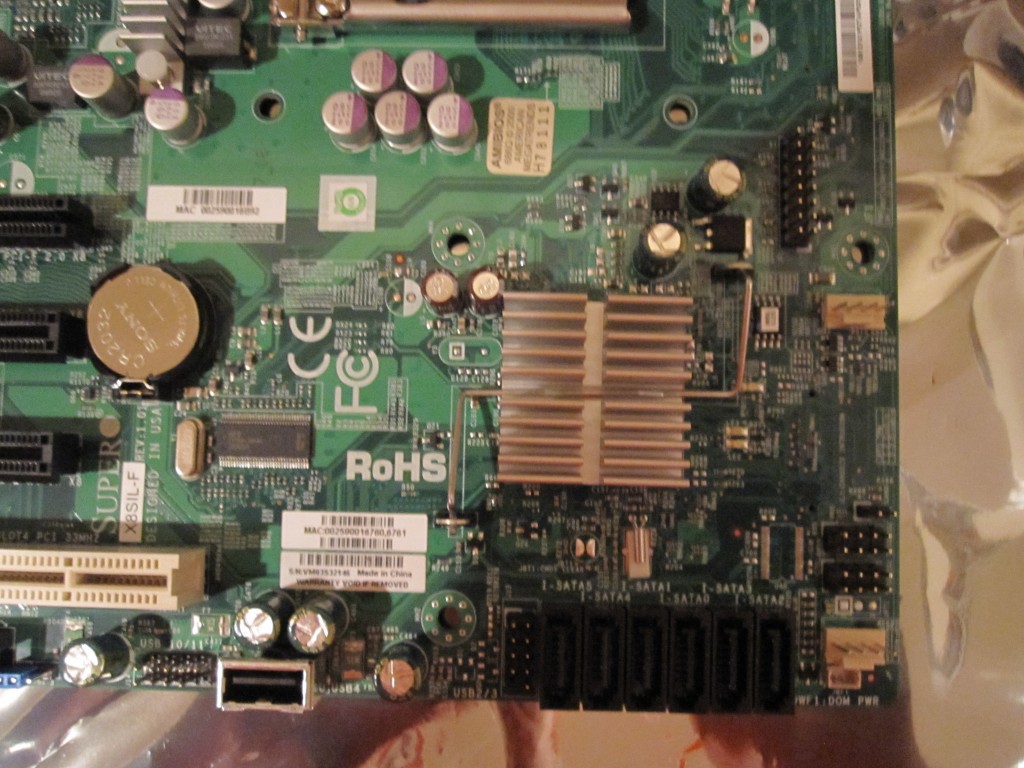
Expansion slots
A major factor for purchasing the X8SIL-F over other boards in Supermicro’s lineup are the expansion slots. I found that the X8SIL-F had the perfect number of PCIe and PCI slots for a file server. One can use on slot for a hardware raid card, a second PCIe slot for an Intel Pro/1000 Quad port Gigabit NIC, and the third PCIe port for a HP SAS Expander. Alternatively, one can use two eight port Supermicro PCIe SATA / SAS HBA’s along with the six on board SATA ports for a total of 22 SATA ports, or the perfect number of ports for a Norco RPC-4220 or RPC-4020 chassis. The PCI slot facilitates adding a single PCI Intel NIC or another piece of legacy hardware. Personally I use an Intel Pro/1000 GT in the PCI slot for another virtual machine NIC.
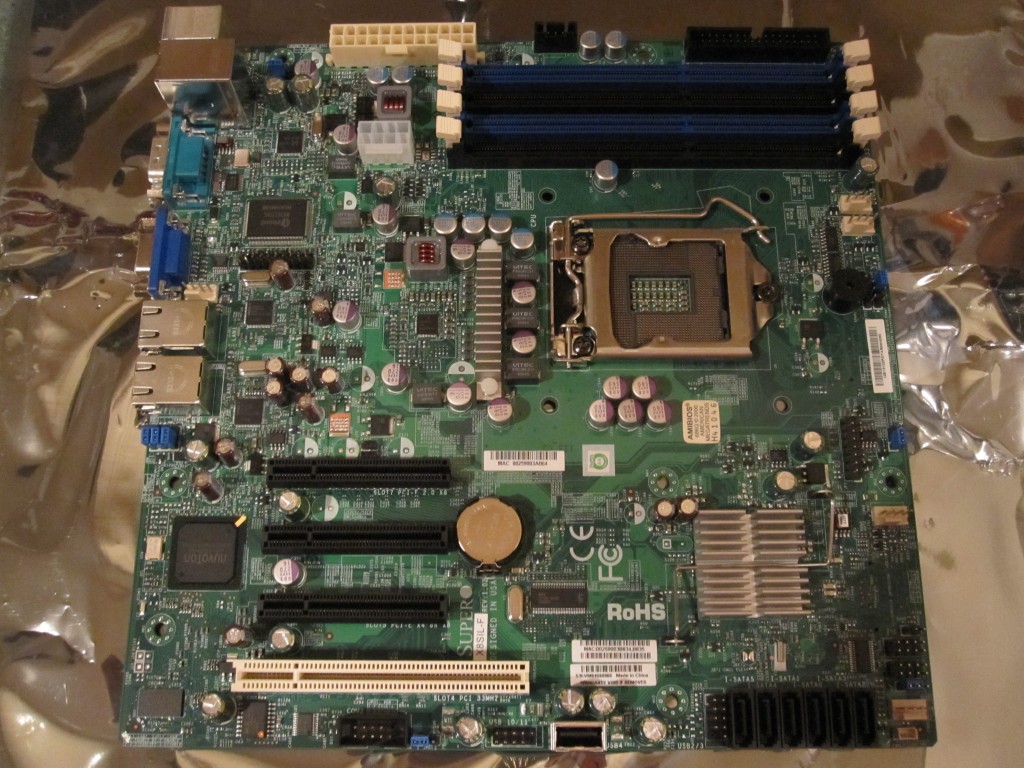
Compatibility
Aside from some memory compatibility issues with consumer-enthusiast memory noted below, the Supermicro X8SIL-F rev 1.02 had no other compatibility issues in my testing. I used Adaptec (1, 3, and 5 series) RAID controllers an Areca (1600 series) controller, a HP SAS Expander, various Intel add in gigabit NICs and the Supermicro board had no issues working with the hardware.
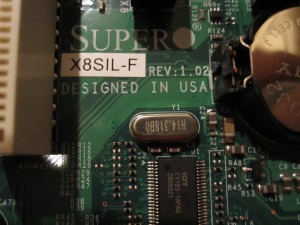
Perhaps the best part about the X8SIL-F is that, through nine operating system installations, the X8SIL-F’s hardware had no incompatibility issues. Ubuntu, OpenSolaris (EON ZFS Storage), FreeNAS (FreeBSD based), Openfiler, and all Windows based operating systems including Windows Home Server V2 Vail and Windows Server 2008 R2 just worked with the onboard hardware and Hyper-V VM’s ran in a stable manner. This is one hallmark of solid server boards in my opinion, especially since I have had more than one occasion trying to install an open source OS on a system where an onboard device was not supported or VMWare ESXi does not support a device. Solid hardware compatibility saves troubleshooting time, and means that repurposing hardware is not a headache later in its lifecycle.
mATX form factor
For LGA1156 systems, which tend to have less memory and expandability than LGA1366 systems, mATX makes a lot of sense. Generally speaking, the smaller board size translates into a small amount of power consumption savings. Furthermore, it allows one to have slightly more space in the enclosure for things like cable routing. Since there are less PCIe lanes available on LGA1156 platforms the mATX design provides sufficient expandability in a small form factor.
Great Supermicro quality and support
After receiving X8SIL-F PCB Revision v1.01 which did not work with the Core i3-530, I contacted Supermicro support about this issue. It was a known incompatibility and Supermicro was willing to immediately exchange my board. Supermicro is one of those companies that I have found over the past decade that if you follow the following rules, they do a great job helping you:
- Do basic troubleshooting yourself (i.e. their support seems geared to experienced users, so it is best to do initial troubleshooting before contacting Supermicro.)
- Deal with Supermicro in a professional manner. Nobody is happy hardware has an issue, but if you know the exact problem, your desired resolution, and have all related information Supermicro generally does a great job fixing the issue.
- Perhaps the most important is look at Supermicro’s hardware compatibility list for products. My problem was CPU incompatibility, but it was due to having an older revision board. With things like memory modules, always make sure that the hardware you are using is on the HCL (see below for why this is important.)
The key here is that building a system using a Supermicro motherboard is not going to be the lowest cost solution, but Supermicro products do come with a better level of support compared to consumer motherboards. If you do your diligence, Supermicro does a great job supporting their products.
Memory
The X8SIL-F does have some interesting memory features. Users coming from consumer boards may notice that the Supermicro X8SIL-F has memory slots that face East- West rather than North- South. This is a standard feature on server motherboards as airflow moves from the front to the back of a rackmount chassis. On consumer platforms, the North-South orientation facilitates airflow from the bottom front of a tower case to the upper-rear exhaust fans.
On actual memory compatibility, I tried on Patriot DDR3 1600MHz C9 set, a Corsair Dominator GT DDR3 1600 C7 set, a G.Skill Ripjaws DDR3 1600MHz C9 set, and another G.Skill DDR3 1600MHz set. All four types of memory I tried had a minimum sample size of four 2GB sticks of and all were non-ECC memory. Not a single one worked as I was greeted with a long beep. This seemed odd since I was moving the memory from H55, H57, and P55 platforms, using the same i3-530 and i5-650 CPUs, and having the modules not work in the X8SIL-F rev 1.01 and rev 1.02. My conclusion was to stop fighting and acquiesce to follow Supermicro’s guidelines.
When I asked Supermicro about the memory issue, they suggested that all of those kits may be x8 rank kits. I will say, with consumer grade kits, it is difficult to tell from marketing material if they are x4 or x8 rank DIMMs. I ended up purchasing two 4GB kits of Kingston ECC 1333MHz DDR3 KVR1333D3E9SK2/4G (which are x8 rank) and they work perfectly in the X8SIL-F. The lesson here is that one should abide by Supermicro’s memory guidelines for the X8SIL-F.
Conclusion
Supermicro offers a compelling platform for those looking for a solid, stable, feature packed, and well supported server motherboard. While the X8SIL-F is not the least expensive platform one can build a Windows based home server, low end virtualization platform, or open source NAS upon, it does offer a compelling feature set for Intel LGA1156 based platforms.

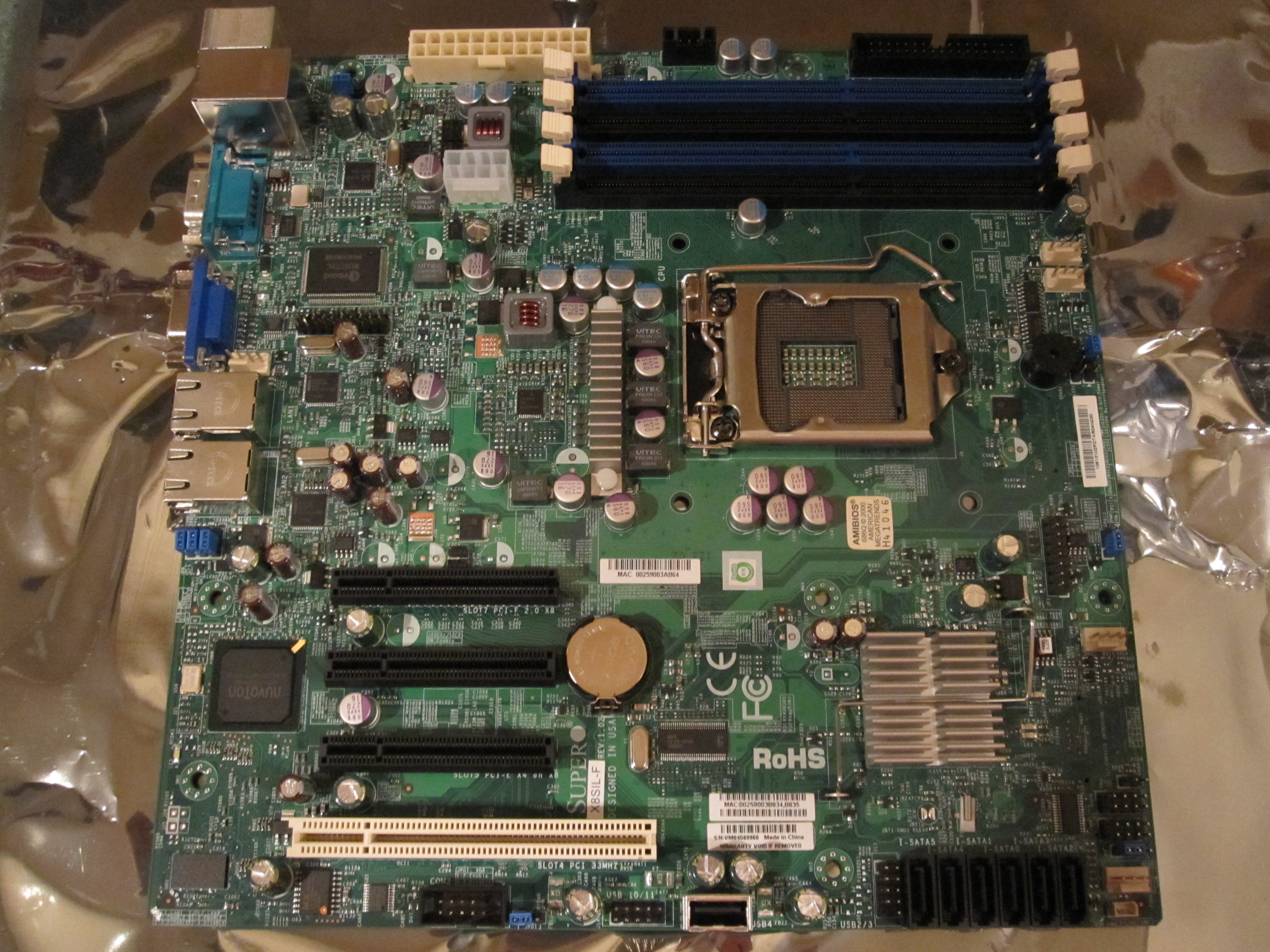


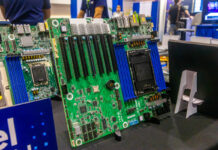
Novel idea a motherboard review that doesn’t have pages of performance graphs showing that every board based upon the same chip set has the same performance. Thanks for not subjecting us to that. Cool that you reviewed something different.
thanks.
are you able to take some kill-a-watt power measurements?
I will post some Kill-A-Watt numbers this weekend with the i3-530. The X3440 is in there now which required a bigger PSU than the PicoPSU 150XT.
WTB IPMI 2.0 review. Can you go indepth on that feature? How reliable is it?
much appreciated
Very nice site and the IMPI 2.0 feature is very cool. I also like to see kill-a-watt power measurements.
I too would like to see power consumption for both cpu’s, idle and load.
As an update, idle power consumption numbers + just the BMC running (i.e. server powered down but IPMI 2.0 and BMC functions still accessible) is online. I am still working on getting reliable load numbers for the X3440 so those may take another day or two. I will probably package that all as a review. For reference the i3-530 idle and peak power consumption in consumer boards is similar to the i5-650, using 27w at idle. The BMC appears to be adding a few watts over the consumer board.
is this the board u use in the 30+ drive whs?
It is around 0530 a.m., I am sitting with my Laptop on the boarder to Switzerland (Lake Constance) and with a cup of coffee enjoy very much that review – many thanks! Planning to build a home server soon and it seems the board is no chosen.
What I am not sure – as I understood from some other reviews it might be that i5 CPUs do NOT work in these boards. And that is a pain as these CPUs also support virtualization and encryption (Win Server 2008 plus Truecrypt e.g.) – so Intel forces people to buy more expensive Xeons…
A non-ECC memory would work for this motherboard?
As I noted above, I had a lot of issues with different sets of non-ECC memory. It may work, but I can only say that the Kingston modules linked above do work with the X8SIL-F. One could also check the memory compatibility list from Supermicro.
Hi, great review. I’m planning to use this board along with a X3440 processor for video transcoding purposes (Home Theater). Using Vail. What SILENT chassis / case would you recommend? It will hold at least 7 2Tb. drives, but the case will be installed inside a Home Theater. Thanks.
If you are going for a HTPC, I would strongly suggest moving the drives to a chassis outside of earshot. That many spinning drives can be very loud.
Right now, the Samsung F4 2TB drives are fairly solid/ quiet drives. You do want to get slower than 7,200rpm drives (e.g. 5,400rpm drives) since noise and heat will be a bigger issue than performance in that application. Using Vail you could also wait for the 3TB drives to start shipping in volume starting Dec 2010 or Jan 2010 (big storage vendors like EMC and NetApp are looking for a Jan 2010 volume shipping and a Feb product introduction).
If you do use a HTPC case, my advice is pick one that looks good and has decent airflow. The Xeon X3440, Supermicro X8SIL-F, 4-8GB of RAM and 7x 5,400rpm drives will probably consume 375w max (obviously you will want a bigger power supply) so you are not dealing with that much heat. Silverstone and Lian-li would probably be my two manufacturers of choice for this application. If you go with a discreet video card, this will obviously increase the need for better cooling and a larger power supply since those dump a lot of heat into cases. The HTPC cases are not really setup for tons of drives so something like the Silverstone LC10B-E that has 7 internal 3.5″ drives is about as good as you are going to get.
Thanks Patrick. Great advise. I’ll go ahead with the Silverstone case. It’ll be installed inside the AV rack, (open and with good ventilation). I was not aware about those 3TB drives. Thanks for the tip.
A little warning on the IPMI device on this board… even though I set the admin login before putting the device online, I just found out just now that our’s was hacked. So, while the idea of remote management is cool, it would appear that it probably isn’t safe to use on a public network. Looks like we’ll have to do a factory reset and run it through a private network.
Curtis, that is a great point and why I advocate either a physically private network or a VLAN for the IPMI management NIC.
Hi,
many thanks for that review. I just ordered an X8SIL-F and hopefully getting rev. 1.02 for mi Core i3.
One Question:
Do I need to use a special power supply for this Board? Or is it compatible with every ordinary consumer power-supply?
I’m thinking about this one(385W version):
http://www.enermax.co.uk/produkte/netzteile/pro82-2.html
Thanks!
I’m in the process of researching a home media server & I’m contemplating on using this motherboard with Intel Core i3 (either the 540 or 550). Could you further explain the overall power usage of such a server (not just the peak power)? Let’s say one has this set-up in the Norco 4220 case with a Corsair CMPSU-650TX PSU & 10 drives (2TB Green Drives). In a average home setting of using the server for media storage (probably accessing music on average 8 hours/day & infrequent video file access) what would the overall daily power consumption be?
Yellowmito: it is compatible with most power supplies. The big thing to make sure of is that the power supply has an 8-pin CPU plug or, if there is only a 4-pin plug you should get a 4-pin to 8-pin converter.
Wondering1: it really depends on the controller, redundancy schema, and software configuration because 10 drives can consume as much (or more) power as an i3-540 + X8SIL-F combined dependent on whether they remain at full speed, idle, spun down, head parked and etc modes. There is a good chance you could see under 100w average in some HW/SW configs and over 150w average on others. I do not have a Corsair CMPSU-650TX on hand so it would be hard to give those kinds of figures.
Just got one of these to replace a buggy X8SIA-F. Great board, and as mentioned, a great companion to the Norco 20-bay cases.
The only issue I’ve had with it is that the CPU Fan header is not clearly marked. On the X8SIA, one of the headers has “CPU” printed next to it. On the X8SIL, they are all just labeled “FAN1, FAN2 …FAN5”. Worse yet, FAN1 and FAN2 are both equally close to the CPU socket, so no hints there. I just assumed it was FAN1. The manual does not help either. It’s possible that the motherboard doesn’t care where you plug the CPU fan, and just sends the same PWM signal to all the fans. It’s hard to say, because I’ve never seen the board ramp up my Xeon stock cooler beyond 960RPM, even when the CPU core temp is above 60C.
This SuperMicro X8SIL-F is my most prefered entry-level-board for my napp-it All-In-One Server concept.
All-In-One is a server, based on a free ESXi type-1 barebone hypervisor with a embedded virtualized free ZFS-NAS/SAN-Server and a virtual network switch based od ESXi features. VM’s installed with this concept are not running from local ESXi datastores but from embedded SAN with much more performance, acessability, security and features.
I have not seen yet any cheaper board with these server-features!
Gea
napp-it.org
As far as I know, according to SuperMicro, an Intel 34xx chipset like this one also supports ECC memory for Core i3/5/7 CPUs. I’m interested in this board, but buying a Xeon purely for the ECC support sounds a bit unneeded when this is true.
So Henno, that is a big point of contention. Intel told me the 34xx series and a non-Xeon CPU will work (e.g. operate) but the ECC functions will not work. A lot of reports go otherwise but I do not want to recommend something that is off spec.
Well, I got the board with an i5-650, and the BIOS POST is reporting UDIMM(ECC mode).
supermicro x8sil
i have this moherboard, i instaled a win7 and i dont have sound
can u help me? ( i understend english better that i write..:)
what type of video card can you add to this board